Superfund Sites in Reuse in Oregon
If you are having trouble viewing the map in your browser, click the 'View larger map' link below
Astoria Marine Construction Company
The Astoria Marine Construction Company site is in Astoria, Oregon. It covers 8 acres along the east bank of the Lewis and Clark River. The site includes a boat shop complex, several facility buildings and low-lying land next to the tidal flats. Astoria Marine Construction Company (AMCCO) began operating in 1924. At first, it made fishing boats and luxury sailing vessels. During World War II, the shipyard made and repaired over 200 ships for the U.S. Navy, including minesweepers and escort aircraft carriers. From 1950 to 1955, AMCCO also built minesweepers for the Korean War. The Oregon Department of Environmental Quality (DEQ) identified environmental concerns in 1996. EPA led an investigation in 2009 and found that poor waste management practices led to accumulation of hazardous chemicals on the property and in river sediments. In 2011, EPA proposed listing the site on the National Priorities List. In 2012, EPA postponed the listing and deferred cleanup guidance to Oregon DEQ. In 2017, Oregon DEQ selected a remedy. AMCCO began cleanup in July 2020 and completed it in 2022. Cleanup included demolition of structures and the removal and capping of more than 1,000 cubic yards of contaminated soil. The property was also drained and reshaped, using living organisms to treat stormwater runoff. DEQ will conduct performance monitoring of the in-water remedy to confirm the cleanup's effectiveness and the first round of sediment performance monitoring is anticipated for 2024. In 2013, the National Park Service listed the Astoria Marine Construction Company on the National Register of Historic Places for its contributions to World War II and the Korean War.
Last updated December 2023
As of December 2024, the EPA had data on one on-site business. This business employed 13 people and generated an estimated $398,090 in annual sales revenue. For additional information click here.
For more information:
Black Butte Mine
The Black Butte Mine Superfund site is near Cottage Grove, Oregon. Mercury mining in the late 1880s to the late 1960s included extracting ore from the mine, crushing it on site, roasting it in kilns to volatilize the mercury, and bottling and shipping the mercury. Mining operations, tailings piles left at the site, and erosion from the site contaminated soil, sediment, surface water, groundwater and biological organisms such as fish with mercury and other metals. EPA added the site to the National Priorities List in 2010. To manage the cleanup, EPA divided the site into three operable units: Black Butte Mine (OU1), Coast Fork Willamette River (OU2) and Cottage Grove Reservoir (OU3). The Black Butte Mine area includes the abandoned mine, associated waste and nearby creeks. In 2007, early cleanup actions by EPA included stabilizing contaminated mine wastes. EPA also regraded the main tailings pile to prevent erosion and cap parts of contaminated soil. In 2018, EPA cleaned up Furnace Creek, one of the most contaminated parts of the site. In 2019, EPA also removed more than 1,500 cubic yards of contaminated soil from the former ore processing area. All Operable Units are currently in the Remedial Investigation (RI) phase of the cleanup process. EPA continues to monitor the rest of the mine area to assess impacts of the early cleanup actions and to identify any remaining contamination. EPA and its contractor CDM Smith, along with the U.S. Geological Survey and with support from the Oregon Department of Environmental Quality, sampled near the mine site and downstream throughout the Coast Fork Willamette River and Cottage Grove Reservoir throughout 2021-2023 testing water, sediment, soil, fish, bugs, and algae for mercury and other metals. The sampling will provide information about contamination from Black Butte Mine and the risks it may pose to human health and the environment. Mercury contamination in the fish of Cottage Grove reservoir led to the first fish advisory in Oregon in 1979. The Oregon Health Authority posted an updated “green” fish health advisory for Cottage Grove Reservoir in 2012. “Green” fish advisories are issued when sport-caught fish such as rainbow trout can be eaten as part of a healthy diet at the recommended level of eight meals per month or more. The U.S. Army Corps of Engineers owns and manages the dam for flood control and recreation. The Coast Fork Willamette River and Cottage Grove Reservoir support camping, birding, boating, swimming and fishing. Other site uses include timber production, agriculture, and wildlife habitat.
Last updated December 2023
As of December 2024, the EPA did not have economic data related to on-site businesses, or economic data were not applicable due to site use. For additional information click here.
For more information:
Formosa Mine
The 76-acre Formosa Mine Superfund site is located on Silver Butte in Douglas County, Oregon. Mining for copper and silver took place on site from about 1910 to 1937. In 1990, Formosa Exploration, Inc. reopened the mine. When mining operations ended in 1993, the mine was filled with mill tailings, crushed ore, concentrates and other mine materials. Tailings and low-grade ore from the mine were put in a lined cell and capped. Acidic water, called acid rock drainage, was discharged into a drain field area. Past mining operations and improper mine closure contaminated soil, sediment, surface water and groundwater with heavy metals. EPA added the Site to the National Priorities List in 2007. Cleanup includes digging up contaminated soil, sediments and materials and putting them in a containment facility on site. It also includes capping contamination on site. In 2018 and 2019, EPA and the Bureau of Land Management (BLM) led emergency removal actions to prevent water discharges from further contaminating surface water near the Site. In December 2021, the Site was among those selected by EPA to receive cleanup funding under the Bipartisan Infrastructure Law. With this funding, EPA is already initiating work on backlogged remedial construction projects and accelerating cleanups at NPL sites. EPA’s goal with this funding is to manage former mine materials at part of the Site – operable Unit 1 (OU1) – to minimize exposures of mine-related contaminants for people, animals and plants, including threatened and endangered species. EPA will also lead a remedial investigation and feasibility study at OU2 to better understand and address contamination in surface water and groundwater at the Site. Cleanup and monitoring activities are ongoing. Nearby Site recreation activities include hunting, hiking, camping and all-terrain vehicle use. Parts of the Site are designated critical habitat for federal and state species, including the northern spotted owl, coastal coho salmon, coastal cutthroat trout and Oregon coast steelhead.
Last updated December 2023
As of December 2024, the EPA did not have economic data related to on-site businesses, or economic data were not applicable due to site use. For additional information click here.
For more information:
Harbor Oil Inc.
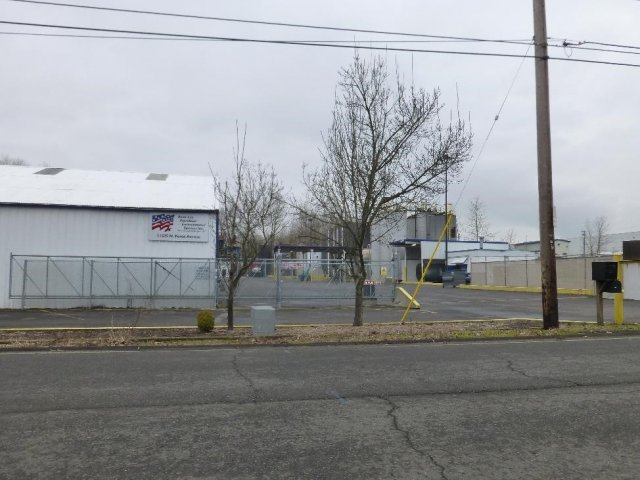
The 4.2-acre Harbor Oil Inc. Superfund site is in Portland, Oregon. It is in an industrial area next to Force Lake. Since 1961, Harbor Oil has recycled used oil on site. In October 1979, a fire destroyed the facility and ruptured aboveground tanks storing used oil. Used oil and waste paint flowed across the site into nearby wetlands and Force Lake, contaminating soil, sediment and groundwater. EPA added the site to the National Priorities List (NPL) in 2003. Investigations found that site contamination does not pose an unacceptable risk to human health or the environment. EPA took the site off the NPL in 2014. An oil recycling company is active on site.
Last updated December 2023
As of December 2024, the EPA had data on one on-site business. This business employed one person and generated an estimated $632,000 in annual sales revenue. For additional information click here.
For more information:
Joseph Forest Products
The 18-acre Joseph Forest Products Superfund site is near Joseph, Oregon. A wood-treating facility was on site from 1974 to 1985. Contamination resulted from poor management practices and a fire. The fire destroyed the treatment building and released wood-treating solution into the soil. EPA added the site to the National Priorities List in 1989. Arsenic, lead and other heavy metals required cleanup. EPA removed tons of contaminated soil and debris, placed restrictions on land use, and monitored groundwater for three years. EPA took the site off the NPL in 1999. Currently, a person lives on site and uses the property as a cow pasture and for growing hay.
Last updated December 2023
As of December 2024, the EPA did not have economic data related to on-site businesses, or economic data were not applicable due to site use. For additional information click here.
For more information:
Martin-Marietta Aluminum Co.
The Martin-Marietta Aluminum Co. Superfund site is in The Dalles, Oregon. Smelting operations began at the site in 1958 and ended in 1984. These operations contaminated large areas of the 350-acre site. EPA added the site to the National Priorities List in 1987. With EPA oversight, Martin-Marietta removed hundreds of tons of waste and placed it in a capped landfill. After cleanup, EPA took the site off the NPL in 1996. Monitoring and operation and maintenance activities are ongoing. In 1986, Northwest Aluminum Company (NAC) leased and reopened the aluminum production plant. NAC made aluminum at the site until 2003. From 2007 to 2011, NAC demolished buildings and removed more contaminated soil under state oversight. The site now includes a closed hazardous waste landfill and a landfill that closed under the Superfund program. Operations and maintenance of the closed landfills are subject to regulatory oversight. The city and the port of The Dalles are interested in redeveloping the site for industrial and commercial purposes. In 2021, EPA’s Superfund Redevelopment Program began providing reuse planning support for the site. An aluminum industrial production facility is currently active on site.
Last updated December 2023
As of December 2024, the EPA had data on one on-site business. This business employed 60 people and generated an estimated $30,800,000 in annual sales revenue. For additional information click here.
For more information:
McCormick & Baxter Creosoting Co. (Portland Plant)
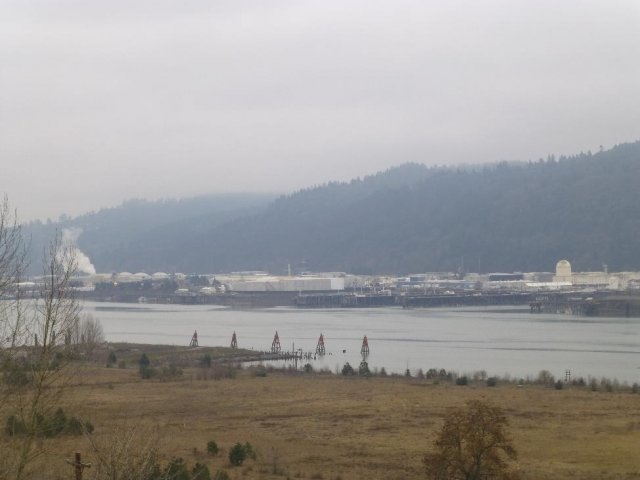
The McCormick & Baxter Creosoting Co. (Portland Plant) Superfund site is on the Willamette River in Portland, Oregon. It includes a 43-acre upland facility and 23 acres of sediment in the Willamette River. From 1944 to 1991, wood-treating operations took place on site. From 1950 to 1965, operators applied waste oil containing creosote and/or PCP to site soils in the central processing area for dust suppression. Operators put liquid process wastes in a low area near the tank farm prior to 1971. From 1968 to at least 1973, operators disposed of residues from the retorts, oil/water separator and evaporators on site in a waste disposal area on the western part of the site. The facility included a wastewater discharge outfall. Operators used the outfall to discharge cooling water and contact wastewater to the river during plant operations. Two major creosote spills occurred in 1950 and 1956, in and near the tank farm area. Wood-treating activities ended in 1991. The Oregon Department of Environmental Quality (ODEQ) found that wood-treating operations contaminated site soils, groundwater, and river sediments. EPA added the site to the National Priorities List in 1994. ODEQ cleaned up the site with EPA oversight and funding. ODEQ removed and disposed of wood-treating wastes and contaminated soils, and removed on-site buildings and placed a soil cap over the upland part of the site. ODEQ also placed a subsurface barrier wall around the contamination and collected and treated contaminated groundwater until 2011. In 2004, ODEQ constructed a 23-acre sediment cap that continues to protect the Willamette River, which is an ecological and recreational feature in the heart of Portland. EPA and ODEQ continue to monitor the soil and sediment caps and the subsurface barrier wall. During cleanup, ODEQ revegetated the former facility area with native plant species that prevent erosion. Cottonwoods, willows and spiraea now cover the riverbanks. Even before cleanup reached completion, interested parties began looking at potential redevelopment opportunities for the site. In 2001, the City of Portland’s Bureau of Planning and Sustainability did a reuse assessment, funded by a grant from EPA’s Superfund Redevelopment Program (SRP). The assessment, endorsed by Portland City Council, clarified that likely future uses at the site include recreational uses. Since 2018, SRP has also supported a regional seed project to help facilitate reuse discussions among site stakeholders and evaluate long-term site ownership and stewardship options. Additional institutional controls will be put in place for the site. The Willamette River part of the site remains in continued recreational use.
Last updated December 2023
As of December 2024, the EPA did not have economic data related to on-site businesses, or economic data were not applicable due to site use. For additional information click here.
For more information:
- Reuse Fact Sheet: McCormick & Baxter Creosoting Co. (Portland Plant) Superfund Site (PDF)
- Superfund Site Profile Page
North Ridge Estates
The North Ridge Estates Superfund site is in Klamath Falls, Oregon. It spans about 170 acres, including lands used for residential properties. A large part of the site included a former Military Marines Recuperation Facility with barracks and supporting structures for the U.S. Navy. After the facility closed in 1946, the site changed ownership for several uses. Eventually, parties demolished buildings on site and began construction of a residential subdivision. Due to improper demolition practices, asbestos-containing materials from demolished buildings was buried on site, contaminating soils. In January 2006, the developer signed a Consent Decree to permanently relocate most of the residents. Some residents declined relocation and continued to live on site. EPA added the site to the National Priorities List in 2011. EPA first responded to the site in 2003 as an emergency response. Since the initial response, EPA has removed 400,000 cubic yards of asbestos-containing materials from properties in the North Ridge Estates. The goal is to fully restore the site to beneficial use as a neighborhood for the Klamath Falls community. Klamath Tribe cultural monitors worked for EPA’s construction contractor during the cleanup to preserve artifacts of historic and cultural significance. Starting in 2013, EPA’s Superfund Redevelopment Program (SRP) supported reuse planning for the site. SRP supported the development of a report with visuals to illustrate how site properties will look after cleanup and removal of over 900 ponderosa pines, which helped residents and potential buyers visualize the cleanup process. The report also shared proposed planting plans based on facilitated discussions with residents. In 2015, EPA finalized a cleanup design to remove 2 to 4 feet of contaminated soils from privately owned properties and replace them with clean soil. The cleanup spanned three construction seasons from 2016 to 2018. EPA completed excavation, clean fill placement and revegetation in November 2018. The Oregon Department of Environmental Quality is responsible for operation and maintenance activities at the site. The cleanup enabled the site’s continued use and reuse as a neighborhood. Over half of the homes have been sold and reoccupied. EPA took 125 acres of the site off the NPL in 2021.
Last updated December 2023
As of December 2024, the EPA did not have economic data related to on-site businesses, or economic data were not applicable due to site use. For additional information click here.
For more information:
- Superfund Site Profile Page
- Reuse and the Benefit to Community: North Ridge Estates Superfund Site (PDF)
- Site Redevelopment Profile: North Ridge Estates, Operable Unit 1 Superfund Site (PDF)
- North Ridge Estates: Phase II Planting Plans and Illustrations (PDF)
- Superfund Job Training Initiative: Making a Difference at the North Ridge Estates Superfund Site in 2016 (PDF)
- Superfund Job Training Initiative: Making a Difference at the North Ridge Estates Superfund Site in 2017 (PDF)
- EPA Region 10 Howard Orlean Excellence in Site Reuse Award
- Video: Protecting Cultural Resources at an Oregon Superfund Site
Northwest Pipe & Casing/Hall Process Company
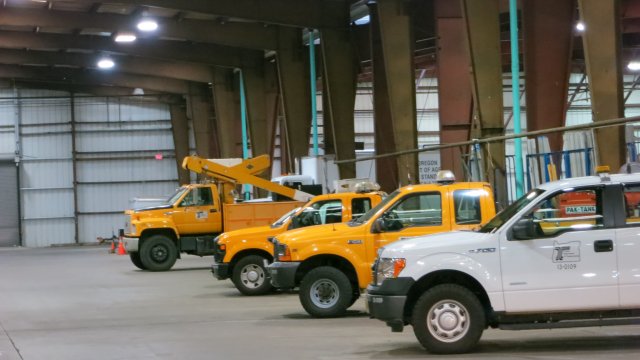
The 53-acre Northwest Pipe & Casing/Hall Process Company Superfund site is in Clackamas, Oregon. Pipe manufacturing and coating operations were active on site from 1956 to 1985. Improper waste disposal activities resulted in contamination of soil and groundwater. EPA added the site to the National Priorities List in 1992. Cleanup included demolition and removal of all site infrastructure, removal and off-site disposal of contaminated soils, placement of a clean soil cap over contaminated areas of soil, and treatment of contaminated groundwater. Groundwater monitoring is ongoing. The site consists of two parcels. Parcel A consists of an 11-acre western lot and a 9-acre eastern lot. Parcel B is a 30-acre lot. The Oregon Department of Transportation (ODOT) owns the 11-acre western lot of Parcel A. ODOT operates a warehouse, office space and an equipment yard on the lot. An automated card-lock fueling station is also on the western end of the equipment yard. The Wilshire Clackamas Commerce Center Owner LLC owns the 9-acre eastern lot of Parcel A. The Clackamas Commerce Park occupies the lot. It consists of three warehouse/office spaces and associated parking lots. Clackamas County Development Agency purchased Parcel B in 2005. In 2010, the agency leased the parcel to Vigor (formerly Oregon Iron Works). Vigor completed a laydown yard in the northeast corner of Parcel B in fall 2009. In summer 2010, Vigor completed a streetcar test track and maintenance facility on the southern half of Parcel B. In 2011, Vigor installed a 30.8-kilowatt solar array on site. Each year, it offsets about 30,700 kilowatt hours of energy generated from conventional sources. Parcel B also includes a wetland and a wetland buffer area, constructed as part of the Site’s remedy. ODOT has extended two roads across the capped area of the site. The Sunrise Expressway was completed in 2016 and helps relieve regional traffic congestion. Minuteman Way that runs along the western part of the site has enhanced area infrastructure and includes bike lanes and sidewalks.
Last updated December 2023
As of December 2024, the EPA had data on 7 on-site businesses. These businesses employed 143 people and generated an estimated $16,183,385 in annual sales revenue. For additional information click here.
For more information:
- Reuse and the Benefit to Community: Northwest Pipe & Casing/Hall Process Company Case Study (2015) (PDF)
- Superfund Site Profile Page
Portland Harbor
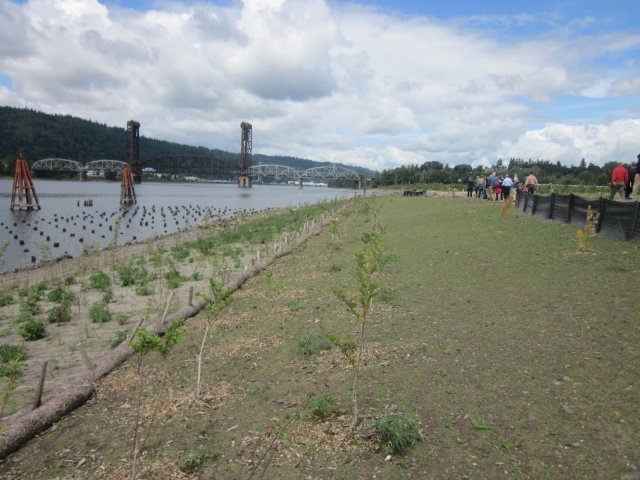
The Portland Harbor Superfund site is in Portland, Oregon. The cleanup area includes a 10-mile stretch of the lower Willamette River known as Portland Harbor and associated upland source properties. For over 150 years, Portland Harbor has served as an international port for commerce. Surrounding properties have supported manufacturing, shipbuilding, petroleum, metal salvaging, power-generation, and other activities. These industrial uses resulted in contamination of the river sediments, upland soil, and groundwater at riverfront properties. EPA added the site to the National Priorities List in 2000. EPA selected the site’s long-term cleanup plan in 2017 and updated it in 2019. The cleanup plan addresses about 380 acres of contaminated sediments and 22,600 feet of riverbank. It involves dredging, capping, enhanced and monitored natural recovery, and about 60 acres of compensatory mitigation to offset any potential habitat loss. The river is an important pathway for migration of fish such as salmon and lamprey. Fishing for salmon, sturgeon and other species takes place along the lower Willamette River. The river is also important to many Tribes in the region, some of which are actively involved in the cleanup oversight effort. Fish are among the resources most frequently used by the Tribes in the Portland Basin and the Willamette Valley. The Tribes continue to gather native plants for food and medicinal purposes. Tribes have reserved hunting, fishing (particularly salmon and sturgeon) and certain gathering rights through treaties with the United States. These activities provide food, cultural heritage, knowledge and skills for Tribal families. Through an agreement with EPA, the University of Portland purchased the 35-acre Triangle Park area of the site in 2008. The University cleaned up the area with EPA oversight and will use it as an expansion of its existing campus, adding athletic fields and a trail for public access to the Willamette River waterfront. Currently, EPA’s Superfund Redevelopment Program (SRP) is providing in-kind planning assistance to gather initial information about future use goals for a portion of the Portland Harbor Superfund Site between Green Anchors and Willamette Cove. The planning assistance will include information gathering from the city, property owners, and key community partners in the area to better understand the range of future use goals and considerations. The outcome will be a document summarizing information gathered including preliminary future goals, land use context, local initiatives, key stakeholder interests, reuse considerations and any recommendations for additional SRP reuse support.
Last updated December 2023
As of December 2024, the EPA had data on 78 on-site businesses. These businesses employed 3,830 people and generated an estimated $1,574,770,556 in annual sales revenue. For additional information click here.
For more information:
Reynolds Metals Company
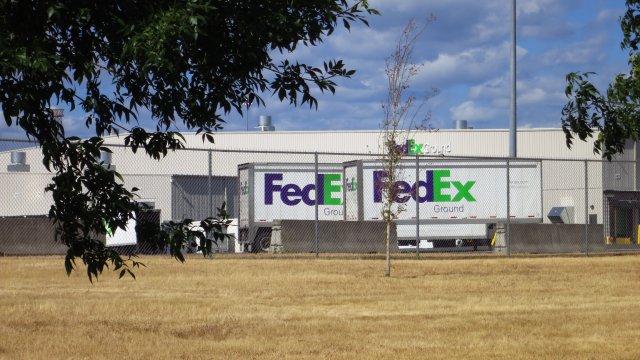
The Reynolds Metals Company Superfund site (the Site) is located outside the city of Troutdale ,20 miles from Portland, Oregon. The Site was formerly an 80-acre aluminum smelter plant surrounded by an additional 700 acres. Contamination was found in groundwater, surface water, sediments and soils on site. EPA added the site to the National Priorities List in 1994. From 1995 to 2008, Reynolds Metal Company completed most cleanup actions at the site. Alcoa acquired the Reynolds Metals Company in 2000, began demolishing the plant in 2003, and sold the property to the Port of Portland (the Port) in 2007. Although the Port now owns the site, Alcoa remains responsible for ongoing groundwater cleanup. The Port developed a three-phase master plan for the site, now called Troutdale Reynolds Industrial Park. From 2008 to 2010, the Port implemented the first phase of the master plan, making 131 acres of the site available for reuse. The Port of Portland sold a 78-acre parcel to FedEx Ground, which built a 441,000-square-foot regional distribution center. The $200 million center opened in October 2010. The Port implemented the second phase of the master plan in 2015 by opening up more lots for sale. In early 2017, Amazon purchased 74 acres of the site property from the Port. In 2018, Amazon opened a $178.4 million, 855,000-square-foot distribution center. The third phase of the master plan called for development of an additional 34.5 acres at the site into an industrial and logistics facility known as The Cubes. The Port set aside the rest of the land for infrastructure, open space, wetlands and a recreation trail. In 2010, the Port received a national Phoenix Award for achievement of excellence in Superfund site reuse. In 2018, EPA Region 10 presented its Howard Orlean Excellence in Site Reuse Award to the Port of Portland in recognition of its efforts as part of a diverse group of stakeholders who have made redevelopment possible at the site. In 2019, EPA recognized the Oregon Department of Environmental Quality with its State Excellence in Supporting Reuse Award for its support of the site’s cleanup and reuse.
Last updated December 2023
As of December 2024, the EPA had data on 4 on-site businesses. These businesses employed 5,226 people and generated an estimated $1,830,020,562 in annual sales revenue. For additional information click here.
For more information:
- Reynolds Metals Company Superfund Site - Before and After
- Reuse and the Benefit to Community: A Beneficial Effects Economics Case Study for the Reynolds Metals Company Superfund Site (PDF)
- Site Redevelopment Profile: Reynolds Metals Company Superfund Site (PDF)
- EPA Region 10 Howard Orlean Excellence in Site Reuse Award
- News Article: TRIP Takes a Bow After Cleanup
- Superfund Site Profile Page
Teledyne Wah Chang
The Allegheny Technologies Incorporated Millersburg Operations (ATI) (formerly Oremet-Wah Chang and Teledyne Wah Chang) plant is in Millersburg, Oregon. The facility is one of the country's largest producers of rare earth metals and alloys. The Teledyne Wah Chang Superfund site includes the 110-acre plant, a 115-acre Farm Ponds Area made up of four ponds containing sludges from the plant's wastewater treatment facility, and a 60-acre Soil Amendment Area field with sludges containing radium for soil amendment. Production at the site began in 1957. Past disposal practices resulted in the contamination of soil, sediments and groundwater. EPA added the site to the National Priorities List in 1983. Between March 1989 and 1990, the SAA transferred to the city of Millersburg (the City) through a deed agreement between the OWC Company and the City. The City acquired the 40-acre SAA and ATI acquired property contiguous to its Farm Ponds Area. Institutional controls requiring that land use remain consistent with current industrial zoning are in place. ATI completed cleanup actions for contaminated sediments and soil in 1999. In 2000, ATI began operating a groundwater treatment system. It continues to extract and treat groundwater. With EPA’s approval, ATI enhanced the system in 2009, adding microbes-based remediation technologies. The ATI plant remains active on site.
Last updated December 2023
As of December 2024, the EPA had data on one on-site business. This business employed 1,172 people and generated an estimated $669,484,932 in annual sales revenue. For additional information click here.
For more information:
Union Pacific Railroad Co. Tie-Treating Plant
The 83-acre Union Pacific Railroad Co. Tie-Treating Plant Superfund site is in The Dalles, Oregon, south of the Columbia River. Union Pacific owned the wood-treating facility from 1926 to 1987. It treated railroad ties for Union Pacific and other customers. The main sources of contamination were wastewater ponds and spills of treatment solutions. EPA added the site to the National Priorities List in 1990. In 1987, the Kerr-McGee Chemical Corporation purchased the facility’s equipment and structures. The company continued wood treating operations until 2004. AmeriTies acquired the plant in 2005. Union Pacific retained ownership of the land and responsibility for all pre-1987 contamination of soil and groundwater. Cleanup activities included removing contaminated debris and soil, putting in a water treatment plant, and placing a soil cover on surface soils. Today, an industrial wood-treating facility and an oil-and-gas extraction facility are active on site.
Last updated December 2023
As of December 2024, the EPA had data on one on-site business. This business employed 45 people and generated an estimated $22,824,000 in annual sales revenue. For additional information click here.
For more information:
United Chrome Products, Inc.

The United Chrome Products, Inc. Superfund site is located just south of Corvallis, Oregon. Owned by the city of Corvallis (the City), the 1.5-acre area is a former industrial hard-chrome plating facility. Agricultural, aviation and light industrial uses surround the site. Past activities contaminated soil and groundwater with chromium and other hazardous waste. EPA added the site to the National Priorities List in 1984. In 1985, EPA removed chromium-contaminated soils and took them off site for disposal. The City pumps and treats groundwater to remove contamination. The City continues to perform long-term groundwater monitoring. CoEnergy leases part of the site for truck parking and propane distribution. The City constructed a 100-kilowatt solar array on the western part of the site in 2017.
Last updated December 2023
As of December 2024, the EPA had data on one on-site business. The EPA did not have further economic details related to this business. For additional information click here.
For more information:
